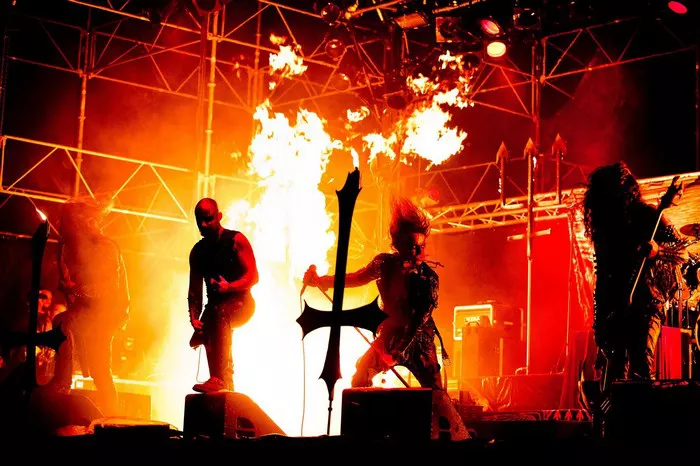In the vast landscape of music genres, heavy metal stands as a pillar of strength and resilience. Within this broad category, there exists a subgenre known as traditional heavy metal, which has left an indelible mark on the music industry since its inception. With its roots firmly planted in the late 1960s and early 1970s, traditional heavy metal continues to captivate audiences worldwide with its electrifying riffs, powerful vocals, and lyrical themes that range from the fantastical to the existential. In this article, we delve into the essence of traditional heavy metal, exploring its defining characteristics, its evolution over the years, and its enduring appeal.
Origins and Influences
To understand traditional heavy metal, one must first trace its origins back to its earliest influences. The genre emerged in the late 1960s, drawing inspiration from various musical movements of the time, including blues, psychedelia, and hard rock. Bands like Black Sabbath, Led Zeppelin, and Deep Purple laid the groundwork for what would later become known as traditional heavy metal, incorporating elements of distortion, amplification, and virtuosic instrumentation into their music.
However, it was Black Sabbath’s eponymous debut album, released in 1970, that is often credited as the catalyst for the birth of heavy metal as a distinct genre. With its ominous riffs, dark lyrical themes, and thunderous sound, Black Sabbath set the stage for a new era of music characterized by its heaviness and intensity.
Defining Characteristics
At its core, traditional heavy metal is defined by its emphasis on melody, rhythm, and sonic power. Musically, the genre is characterized by its use of distorted guitars, driving basslines, and thunderous drumming, creating a wall of sound that is both visceral and captivating. Guitar solos play a prominent role in traditional heavy metal, with virtuoso players like Tony Iommi, Ritchie Blackmore, and Jimmy Page paving the way for future generations of shredders.
Vocally, traditional heavy metal often features powerful, operatic singing, with vocalists like Ronnie James Dio, Rob Halford, and Bruce Dickinson commanding the stage with their soaring vocals and theatrical delivery. Lyrically, the genre explores a wide range of themes, from mythology and fantasy to social commentary and personal introspection, often imbuing its songs with a sense of drama and grandeur.
Evolution and Subgenres
Over the decades, traditional heavy metal has evolved and diversified, giving rise to numerous subgenres and offshoots. In the 1980s, the genre reached new heights of popularity with the emergence of the New Wave of British Heavy Metal (NWOBHM), which introduced bands like Iron Maiden, Judas Priest, and Motorhead to a global audience. These bands built upon the foundation laid by their predecessors, incorporating elements of speed, aggression, and virtuosity into their music while retaining the melodic sensibilities that defined the genre.
In the 1990s and 2000s, traditional heavy metal experienced a resurgence in popularity, thanks in part to the efforts of bands like Manowar, Dio, and Metallica, who continued to push the boundaries of the genre while staying true to its roots. Meanwhile, new subgenres like power metal, thrash metal, and doom metal emerged, each adding its own unique twist to the traditional heavy metal sound.
Today, traditional heavy metal continues to thrive in the underground music scene, with bands like Ghost, Grand Magus, and Visigoth carrying the torch for a new generation of metalheads. While the mainstream music industry may have shifted its focus to other genres in recent years, traditional heavy metal remains a vibrant and vital part of the global music landscape, beloved by fans young and old alike.
Enduring Appeal
What is it about traditional heavy metal that continues to captivate audiences decades after its inception? Perhaps it is the genre’s timeless quality, its ability to transcend trends and fads and speak to something deeper within the human psyche. Or perhaps it is the sense of community and camaraderie that exists within the heavy metal scene, where fans come together to celebrate their shared love of loud guitars and thunderous drums.
Whatever the reason, there is no denying the enduring appeal of traditional heavy metal. Whether it’s the anthemic choruses of Iron Maiden, the epic storytelling of Dio, or the raw energy of Motorhead, there is something undeniably powerful about the music of traditional heavy metal that continues to resonate with listeners of all ages.
Conclusion
In conclusion, traditional heavy metal is more than just a genre of music – it is a cultural phenomenon, a way of life, and a testament to the enduring power of rock and roll. From its humble beginnings in the late 1960s to its continued relevance in the 21st century, traditional heavy metal has proven itself to be a force to be reckoned with, inspiring generations of musicians and fans alike. As long as there are electric guitars, pounding drums, and screaming vocals, the spirit of traditional heavy metal will continue to live on, reminding us all of the timeless power of music.

